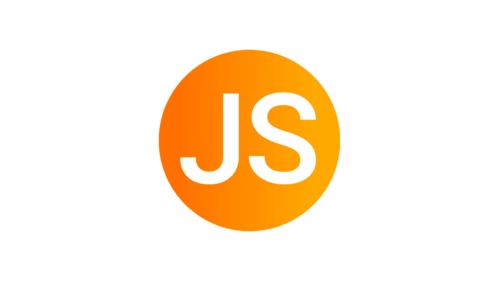判断JS数组是否包含元素的几种方法
时间:2025-08-07 18:06:44 474浏览 收藏
想要判断JS数组中是否包含特定元素?`includes()`方法是你的首选!本文详细介绍了`includes()`方法的使用,它能简洁明了地判断数组中是否存在指定值,返回`true`或`false`。相较于传统的循环遍历,`includes()`不仅代码更简洁,可读性也更高。此外,文章还对比了`indexOf()`、`find()`和`findIndex()`等其他判断方法,并深入探讨了使用`includes()`时需要注意的类型匹配、NaN处理、`fromIndex`参数以及稀疏数组等问题。掌握`includes()`,让你的JS数组操作更高效!
includes() 方法用于判断数组是否包含指定元素,返回 true 或 false;2. 其他方法包括 indexOf()(返回索引,不存在则为-1)、find()/findIndex()(通过回调函数查找);3. 使用 includes() 时需注意:使用严格相等比较(类型必须匹配)、能正确处理 NaN、fromIndex 参数影响搜索起始位置、稀疏数组中的空槽被视为 undefined、在旧浏览器中可能存在兼容性问题。

核心在于 includes() 方法,它简洁明了地告诉你一个数组里是否藏着你想要找的东西。
解决方案:
includes() 方法是 JavaScript 数组的一个内置函数,用于检查数组是否包含某个指定的值。如果包含,返回 true;否则,返回 false。这比自己写循环去遍历数组要方便多了,而且可读性也更好。
const myArray = [1, 2, 3, 'apple', 'banana'];
// 检查数组是否包含数字 3
const hasThree = myArray.includes(3); // true
// 检查数组是否包含字符串 'orange'
const hasOrange = myArray.includes('orange'); // false
// 检查数组是否包含 NaN
const hasNaN = myArray.includes(NaN); // 注意:includes() 可以正确处理 NaN它不仅可以查找基本类型,还可以查找字符串,甚至 NaN。 注意,includes() 使用的是严格相等(===)来比较,所以类型也必须匹配。
includes() 的基本语法是 array.includes(searchElement, fromIndex)。 searchElement 是你要查找的元素,fromIndex 是可选的,表示从哪个索引位置开始查找。 如果不指定 fromIndex,默认从数组的开头开始查找。
JS数组中除了includes还有哪些方法可以判断数组是否包含某个元素?
除了 includes(),还有 indexOf() 和 find()/findIndex() 可以用来判断数组是否包含某个元素,不过它们的行为和用途略有不同。
indexOf():indexOf()方法返回数组中找到指定元素的第一个索引。 如果数组中不存在该元素,则返回 -1。 这也是一种常见的判断数组是否包含某个元素的方法。const myArray = [1, 2, 3, 'apple', 'banana']; const indexOfThree = myArray.indexOf(3); // 2 const indexOfOrange = myArray.indexOf('orange'); // -1 if (myArray.indexOf('apple') !== -1) { console.log('数组包含 apple'); }indexOf()的缺点是它不能检测NaN,因为NaN !== NaN。 另外,它只返回找到的第一个元素的索引,如果你需要知道元素出现的所有位置,就需要自己写循环了。find()和findIndex():find()方法返回数组中满足提供的测试函数的第一个元素的值。findIndex()方法返回数组中满足提供的测试函数的第一个元素的索引。 如果没有找到满足条件的元素,find()返回undefined,findIndex()返回 -1。const myArray = [1, 2, 3, 'apple', 'banana']; const foundElement = myArray.find(element => element === 'apple'); // 'apple' const foundIndex = myArray.findIndex(element => element === 3); // 2 const notFoundElement = myArray.find(element => element === 'orange'); // undefined const notFoundIndex = myArray.findIndex(element => element === 'orange'); // -1
find()和findIndex()更加灵活,因为你可以使用自定义的测试函数。 比如,你可以查找数组中大于 2 的第一个数字。const myArray = [1, 2, 3, 4, 5]; const found = myArray.find(element => element > 2); // 3
不过,如果只是简单地判断数组是否包含某个元素,
includes()通常是最简洁的选择。
使用 includes() 方法时有哪些需要注意的点?
类型匹配:
includes()使用严格相等(===)进行比较,这意味着类型必须匹配。 例如,includes(3)不会匹配字符串'3'。const myArray = [1, 2, '3']; const hasThreeNumber = myArray.includes(3); // false const hasThreeString = myArray.includes('3'); // trueNaN的处理:includes()可以正确处理NaN,这与其他一些方法(如indexOf())不同。const myArray = [1, 2, NaN]; const hasNaN = myArray.includes(NaN); // true
fromIndex参数: 可以使用fromIndex参数指定开始搜索的位置。 如果fromIndex大于或等于数组的长度,则返回false,不会搜索数组。 如果fromIndex是负数,则从array.length + fromIndex的索引开始搜索。const myArray = [1, 2, 3, 4, 5]; const hasOneFromIndexTwo = myArray.includes(1, 2); // false (从索引 2 开始搜索) const hasFourFromIndexNegativeTwo = myArray.includes(4, -2); // true (从索引 3 开始搜索)
稀疏数组:
includes()在稀疏数组中的行为可能与预期不同。 稀疏数组是包含空槽的数组。includes()不会跳过空槽,而是将其视为undefined。const myArray = [1, , 3]; // 注意中间有一个空槽 const hasUndefined = myArray.includes(undefined); // true (因为空槽被视为 undefined)
浏览器兼容性:
includes()方法是 ES2016 (ES7) 引入的,因此在一些旧版本的浏览器中可能不支持。 如果需要兼容旧版本浏览器,可以使用indexOf()或使用 Babel 等工具进行代码转换。
总的来说,includes() 是一个简单易用且功能强大的方法,但在使用时需要注意类型匹配、NaN 的处理、fromIndex 参数以及稀疏数组等问题。
本篇关于《判断JS数组是否包含元素的几种方法》的介绍就到此结束啦,但是学无止境,想要了解学习更多关于文章的相关知识,请关注golang学习网公众号!
-
502 收藏
-
501 收藏
-
501 收藏
-
501 收藏
-
501 收藏
-
274 收藏
-
232 收藏
-
339 收藏
-
359 收藏
-
342 收藏
-
385 收藏
-
192 收藏
-
360 收藏
-
149 收藏
-
477 收藏
-
313 收藏
-
169 收藏
-

- 前端进阶之JavaScript设计模式
- 设计模式是开发人员在软件开发过程中面临一般问题时的解决方案,代表了最佳的实践。本课程的主打内容包括JS常见设计模式以及具体应用场景,打造一站式知识长龙服务,适合有JS基础的同学学习。
- 立即学习 543次学习
-

- GO语言核心编程课程
- 本课程采用真实案例,全面具体可落地,从理论到实践,一步一步将GO核心编程技术、编程思想、底层实现融会贯通,使学习者贴近时代脉搏,做IT互联网时代的弄潮儿。
- 立即学习 516次学习
-

- 简单聊聊mysql8与网络通信
- 如有问题加微信:Le-studyg;在课程中,我们将首先介绍MySQL8的新特性,包括性能优化、安全增强、新数据类型等,帮助学生快速熟悉MySQL8的最新功能。接着,我们将深入解析MySQL的网络通信机制,包括协议、连接管理、数据传输等,让
- 立即学习 500次学习
-

- JavaScript正则表达式基础与实战
- 在任何一门编程语言中,正则表达式,都是一项重要的知识,它提供了高效的字符串匹配与捕获机制,可以极大的简化程序设计。
- 立即学习 487次学习
-

- 从零制作响应式网站—Grid布局
- 本系列教程将展示从零制作一个假想的网络科技公司官网,分为导航,轮播,关于我们,成功案例,服务流程,团队介绍,数据部分,公司动态,底部信息等内容区块。网站整体采用CSSGrid布局,支持响应式,有流畅过渡和展现动画。
- 立即学习 485次学习
